Beauty beyond - winning astronomy photography
- Published

Sumo Waggle Adventure - Lomaas River, Skanland, Norway - by Arild Heitmann (Aurorae, Highly Commended)
Shimmering phenomena in the night sky - and starry sights billions of light years away - take a look at some of the finalists in the 2015 Insight Astronomy Photographer of the Year competition.
"Utterly enthralling with moments of brilliance" is how the comedian, impersonator and amateur astronomer Jon Culshaw describes the shortlisted entries in the competition to become the Astronomy Photographer of the Year.
With his personal interest in the cosmos, Culshaw was one of the judges this year.
He says he was aged about seven or eight when he got the space bug.
He looked for UFOs, was fascinated by lunar eclipses and always watched the Sky at Night.
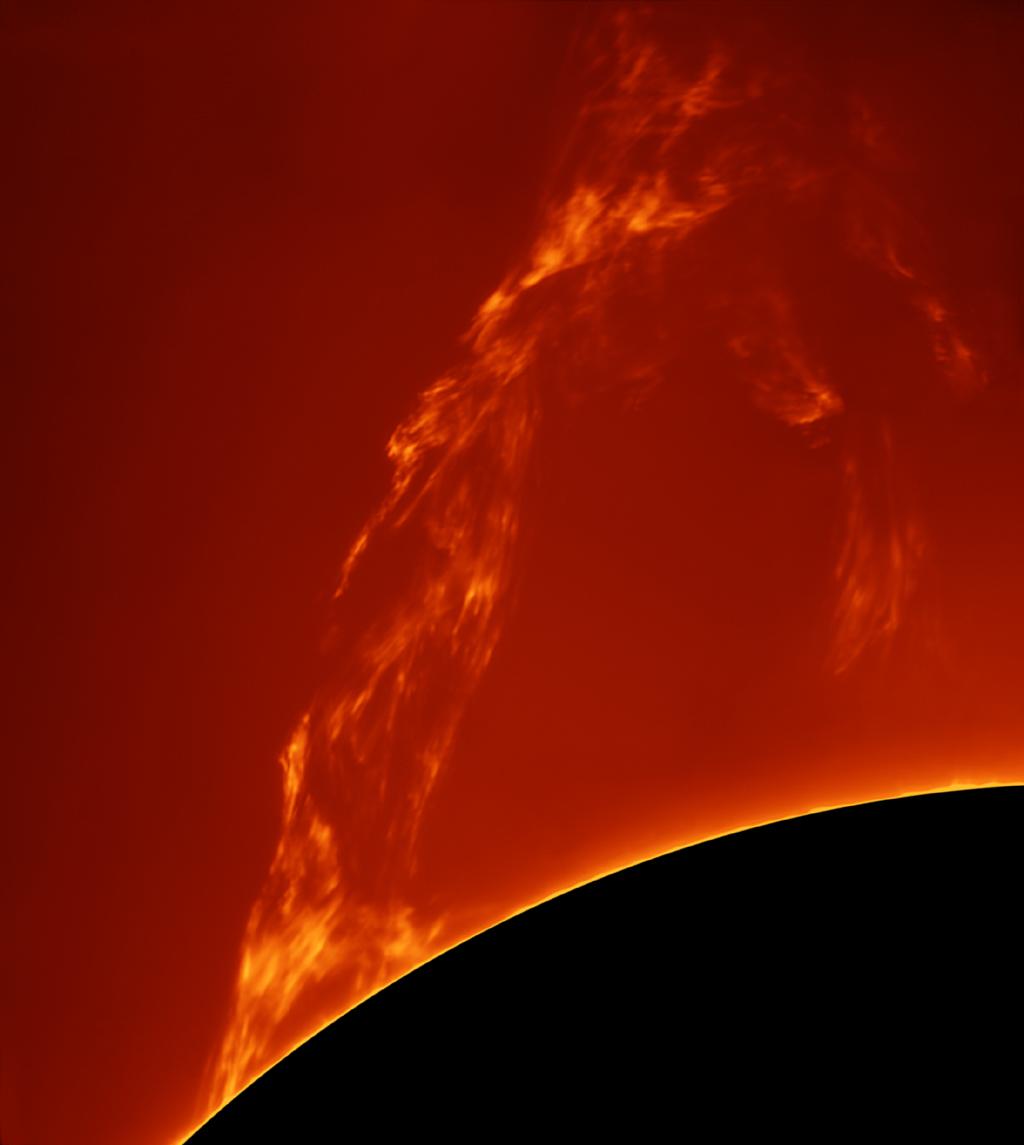
Huge Prominence Lift-off - by Paolo Porcellana (Our Sun, Winner)
We are joined in the circular Endeavour Room, with its domed ceiling at the top of the Royal Observatory in Greenwich, by another judge - Marek Kukula, the observatory's Public Astronomer.
"It is astonishing to see how far astrophotography has come in the past five years," he says.
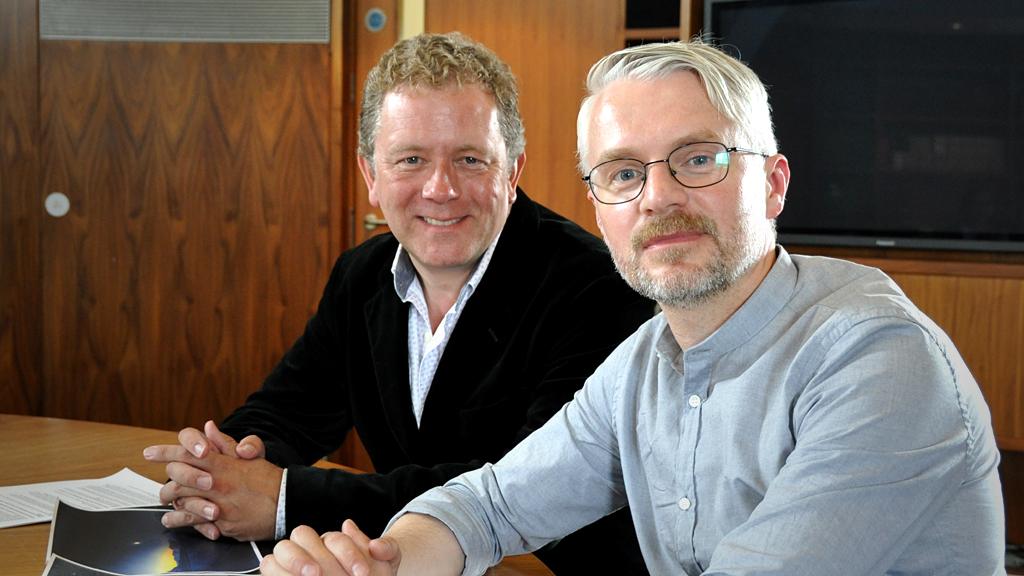
Jon Culshaw and Marek Kukula
The next image of the twinkling Milky Way was taken over a lake in the Pyrenees in south-west France.
Kukula says it is what the night sky would look like "if our eyes could take long exposure pictures like a camera".
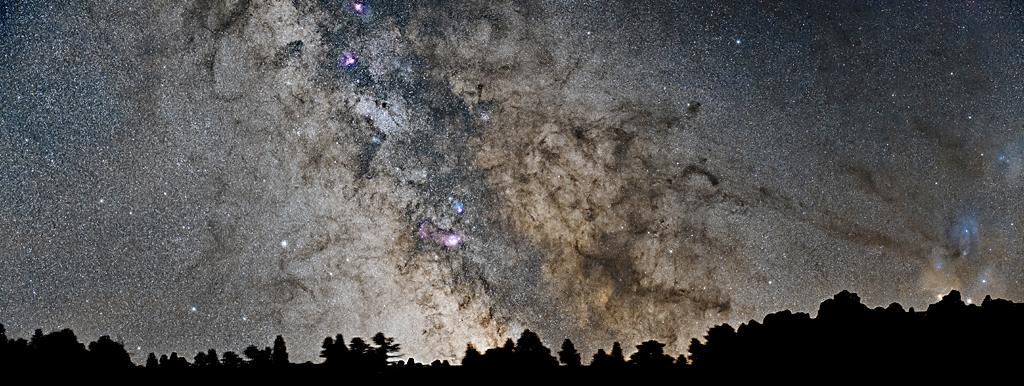
River of Light - Haute-Pyrenees, France - by Martin Campbell (Skycapes, Highly Commended)
"I love these noctilucent clouds which can be seen at certain times of the year, " says Culshaw of the next photo.
Normally seen in mid-summer in the UK - noctilucent clouds are high enough in the atmosphere to still be illuminated long after sunset.
"They are mesmerising," says Culshaw. "And taken over Sunderland, which is also pleasing."
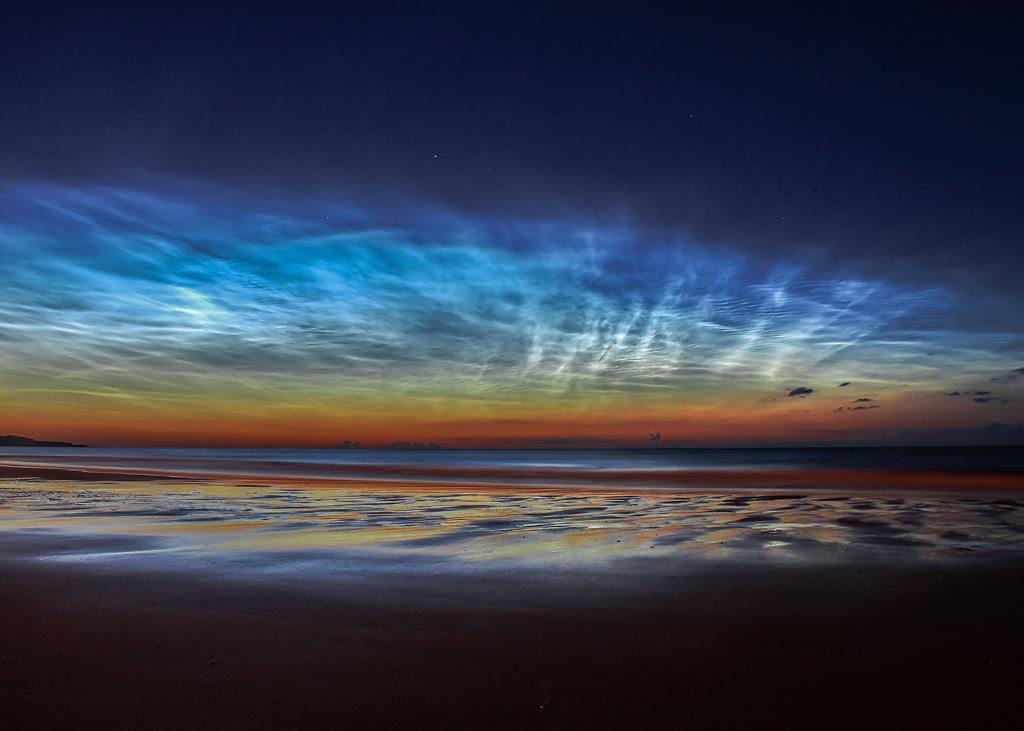
Sunderland Noctilucent Cloud Display - north-east England - by Matt Robinson (Skyscapes, Runner Up)
Because the competition gets so many photographs of aurorae - the Northern and Southern Lights - there is a category just for them.
"It is a challenge to take an aurora shot which isn't a bit kitsch, a bit Christmas cardy" says Jon Culshaw.
But he describes the category winner as a wonderful shot with "the aurora cascading down, contrasted with a snowy mountainside cutting the image in two".
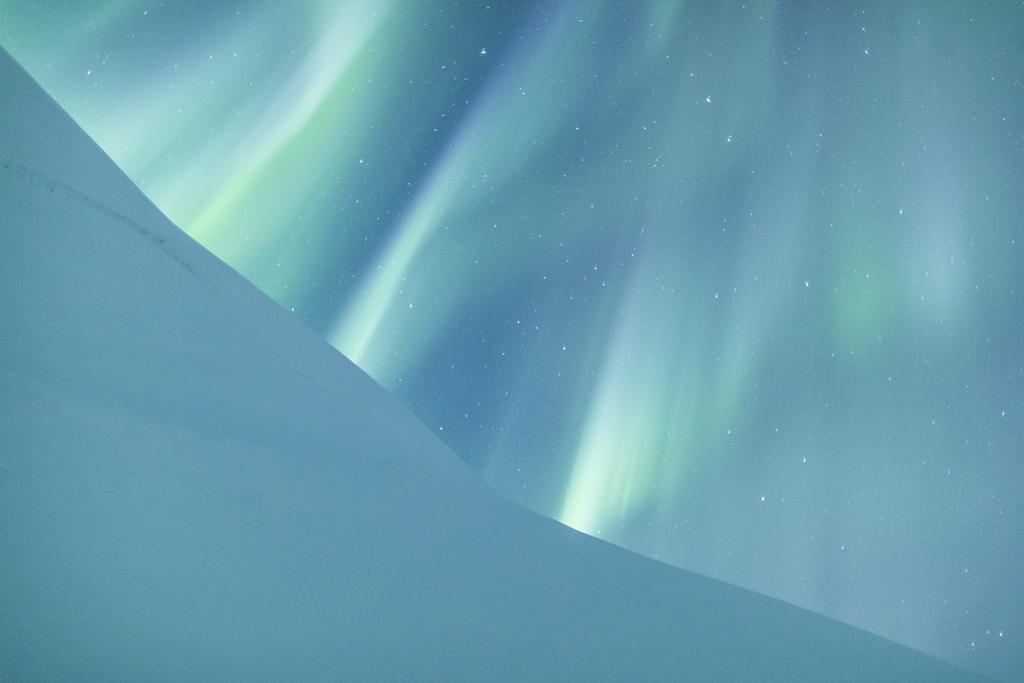
Silk Skies - Abisko National Park, Lapland, Sweden - by Jamen Percy (Aurorae, Winner)
The next image took runner up in the Aurorae category.
"As a geeky physicist what I really like about this is the colours," says Kukula, "and how they are separated by height".
"It is to do with the physics of emitting atoms, high in the atmosphere. Green comes from oxygen, and the reds and blues come from a mix of oxygen and nitrogen. It is physics in action."
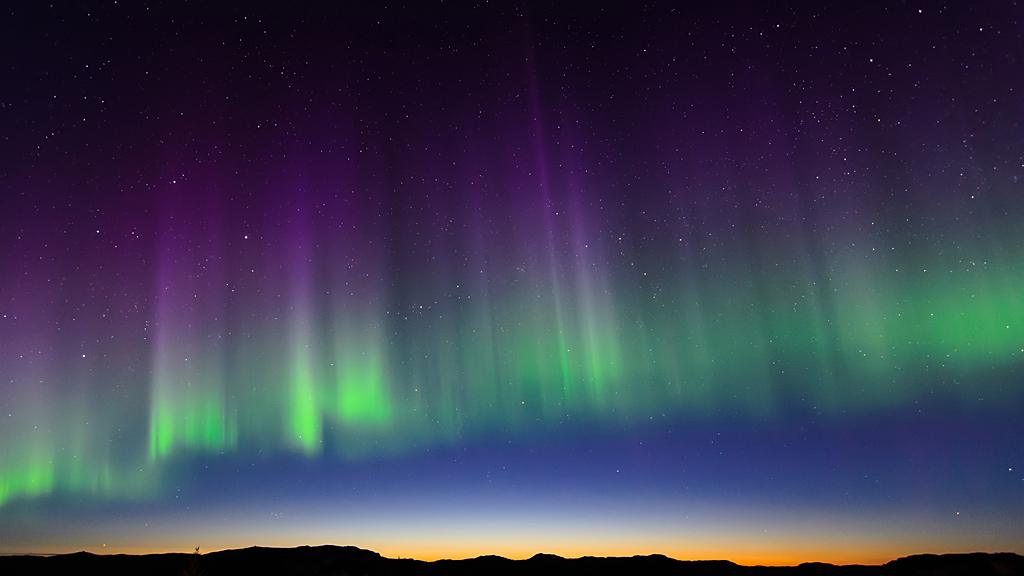
April Aurora - Hitra, Sor-Trondelag, Norway - by Kolbein Svensson (Aurorae, Runner Up)
This next image - from the Our Moon category - shows the International Space Station crossing very close to the Terminator, the division between the illuminated and dark parts of the Moon, the lunar equivalent of day and night.
The moon is the largest satellite orbiting the Earth - the ISS is the second largest.
"The timing of this shot is great," says Culshaw. "And to get the detail of the space station - it doesn't look like just a blob or a fly on the lens."
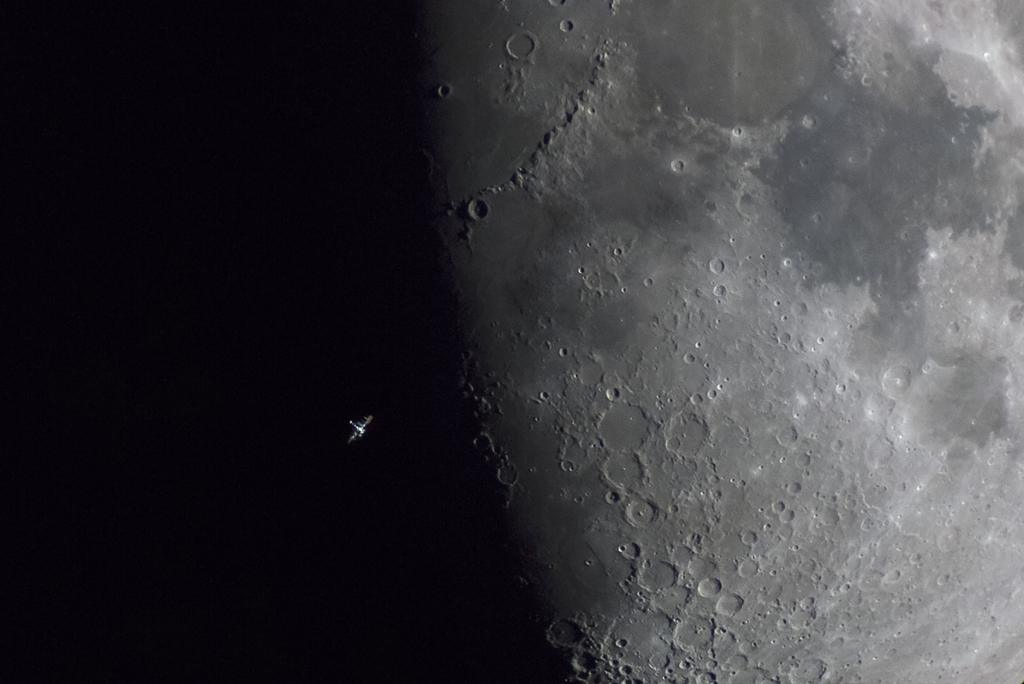
ISS Terminator Moon - by Daniel Fernandez Caxete (Our Moon, Runner Up)
"Unlike other astronomical objects - which emit too little light for photos - the Sun emits too much," says Kukula.
With the Sun he says, "photographers must limit the amount of light that comes into the camera - and this photographer has perfectly judged it with the right amount of dazzle".
The image is of the second diamond ring of the total solar eclipse of 20 March 2015.
Culshaw, who himself witnessed the eclipse from a ship just north of the Faroe Islands, says this photo makes him think of "clanging cymbals - an orchestral cacophony of light. It really does capture the drama".
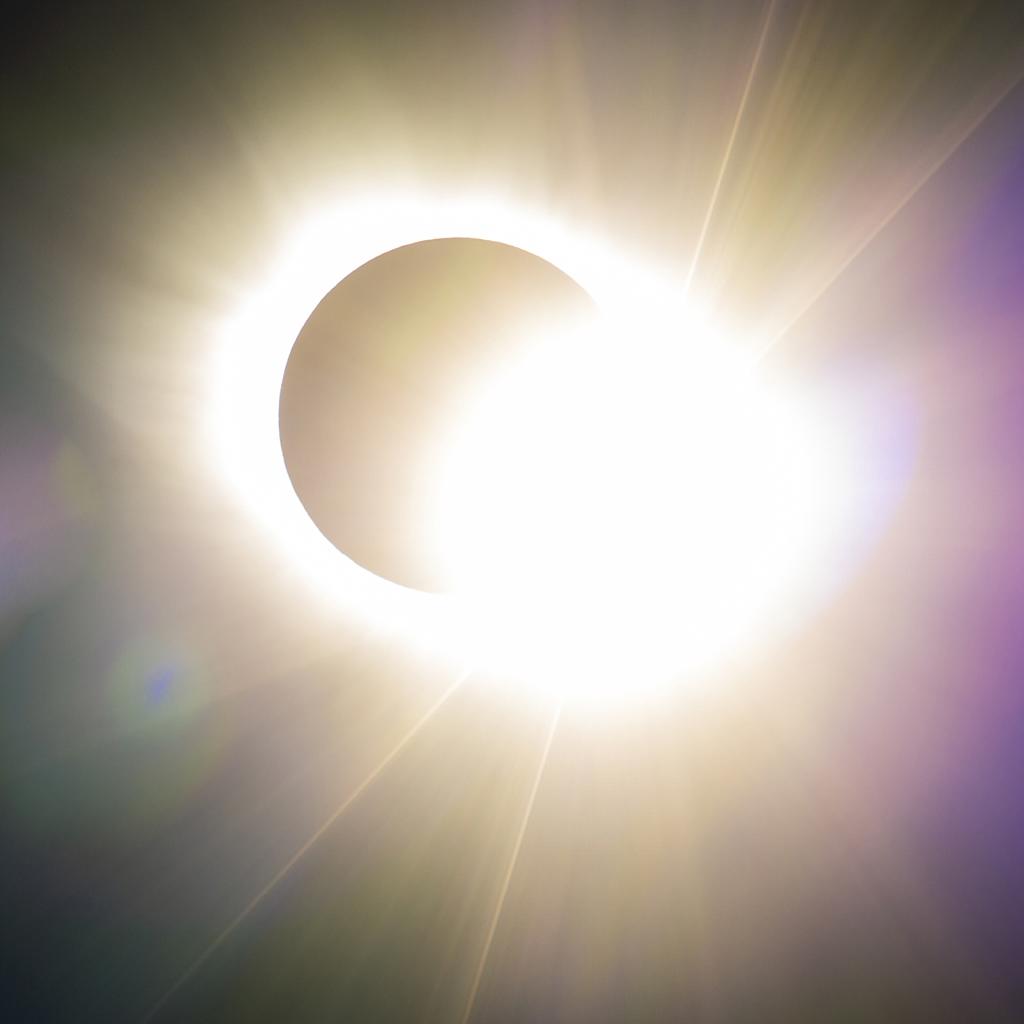
Totality Ends - by David Wrangborg (Our Sun, Runner Up)
Culshaw describes the next image as "a wonderful moment of serendipity".
It's called The Arrow Missed the Heart - and shows the Heart Nebula with Comet Jacques passing by.
Marek Kukula explains how near and far are juxtaposed beautifully here.
"The comet is well within our own Solar System - but the nebula is trillions and trillions of kilometres away."
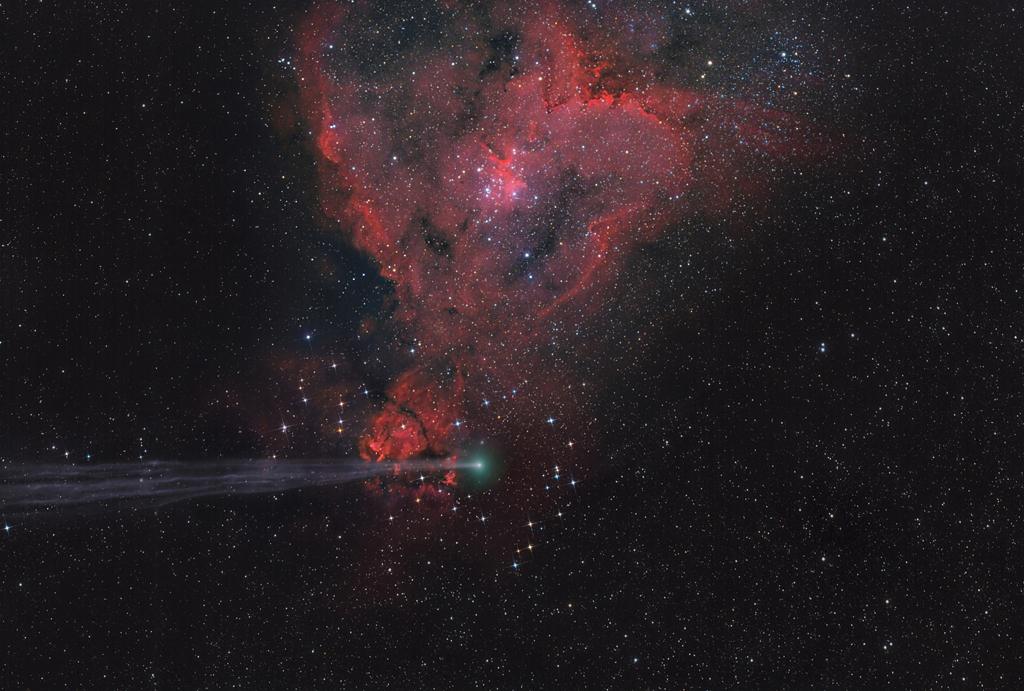
The Arrow Missed the Heart - by Lefteris Velissaratos (Planets, Comets and Asteroids, Winner)
Moving far, far beyond our own Solar System, the next photo is of a globular cluster of millions of ancient stars all swarming together like a cloud of bees.
"I would just love to be on the surface of a planet around one of the stars right at the centre," says Culshaw. "Imagine what kind of a night sky you would see. It would be incredible."

The Magnificent Omega Centauri - by Ignacio Diaz Bobillo (Stars and Nebulae, Winner)
This next image is of colliding galaxies - "and for something so violent it's really rather graceful - like a dance," says Culshaw.
"It is a galactic crash playing out over millions of years," adds Kukula. "Red clouds of hydrogen - clouds of gas - collapsing to create new stars."
"This is a picture of the distant past and to see what the galaxies are doing now we will have to wait millions of years for the light to reach us."
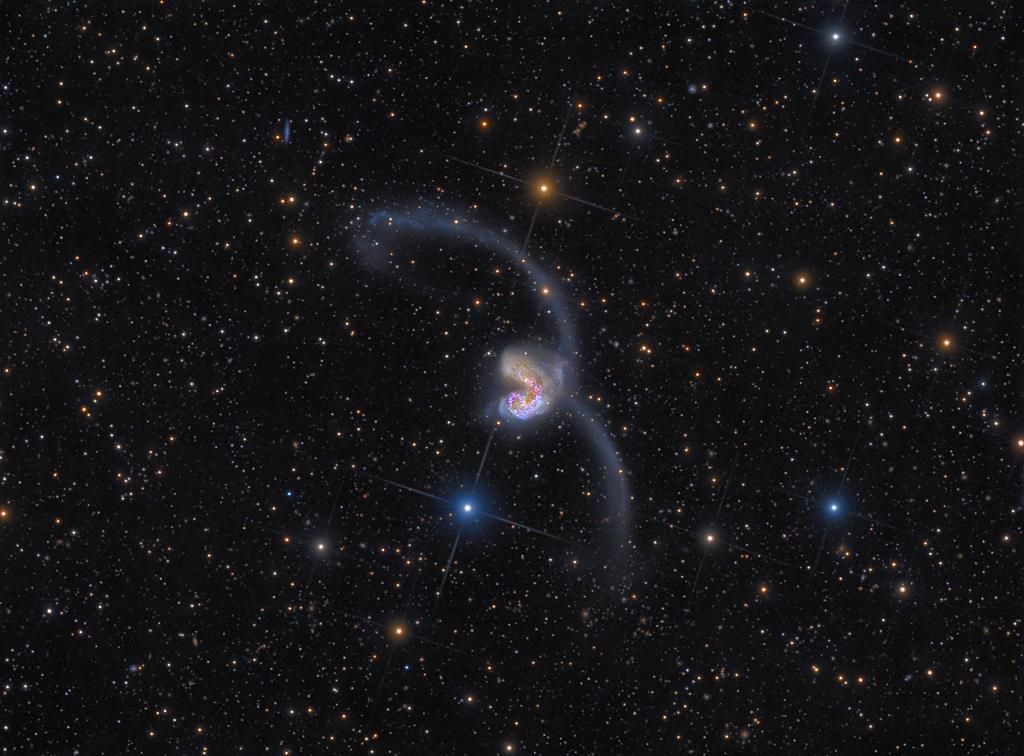
The Antennae Galaxies, Extreme Deep Field, 75 Hours - by Rolf Olsen (Galaxies, Runner Up)
This next image won the Galaxies category. It shows M33 - one of our neighbouring galaxies.
"You can see how chaotic the galaxy is with clouds of Space Dust," says Kukula. "Not a neat and tidy galaxy like the Milky Way or Andromeda."

M33 Core - by Michael van Doorn (Galaxies, Winner)
Jon Culshaw says the People and Space category is one of his favourites.
"Part of the processing of this category is to reject certain images, where people have stood in what would otherwise been a lovely shot - as if to say LOL or take a selfie."
But in this next image he says, the interaction between people and space is very subtle.
He says the silhouetted figure adds a rather alien quality.

Interaction - Hemnesberget, Nordland, Norway - by Tommy Eliassen (People and Space, Highly Commended)
"I love the sense of the night sky being a cinema screen revealing a great display for the lone astrophotographer," says Kukula of the next image.
Taken in Chile, it shows the Milky Way arching in the night sky. The astronomer uses a red torch - so the red light won't affect his night vision.
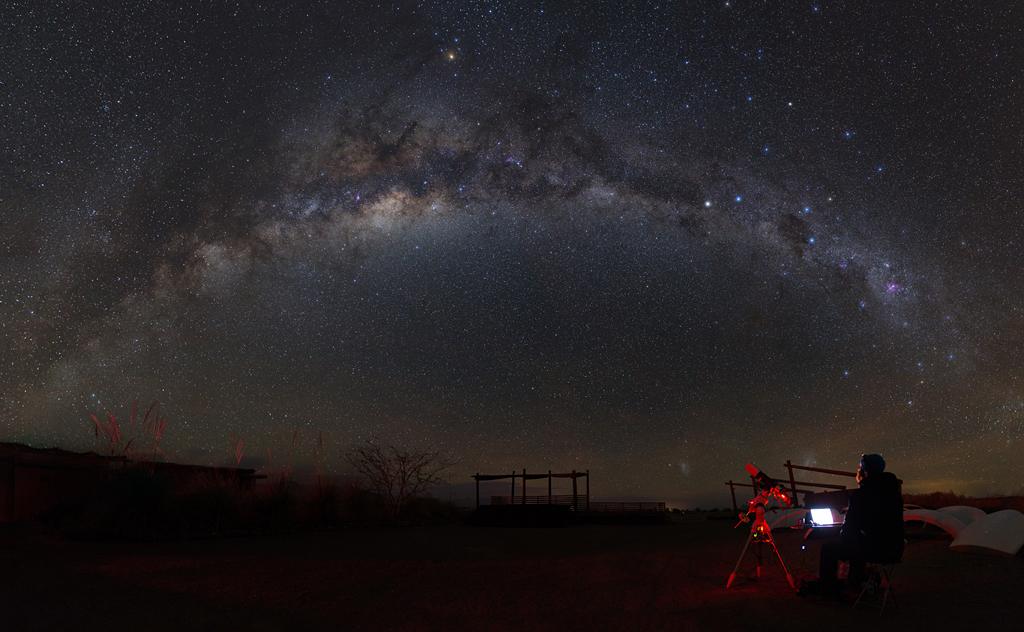
Eternity and Astrophotographer - San Pedro de Atacama, El Loa Province, Chile - by Yuri Zvezdny (People and Space, Runner Up)
This next image - taken in Hong Kong - won the People and Space category.
"It looks like rivers of molten quicksilver running down," says Culshaw.
But the photo was taken with a long exposure and the rivers are actually the torches of astronomers going up and down the hill.
"I love the fact that the winner of the People and Space category this year doesn't have any people in it!" adds Kukula.
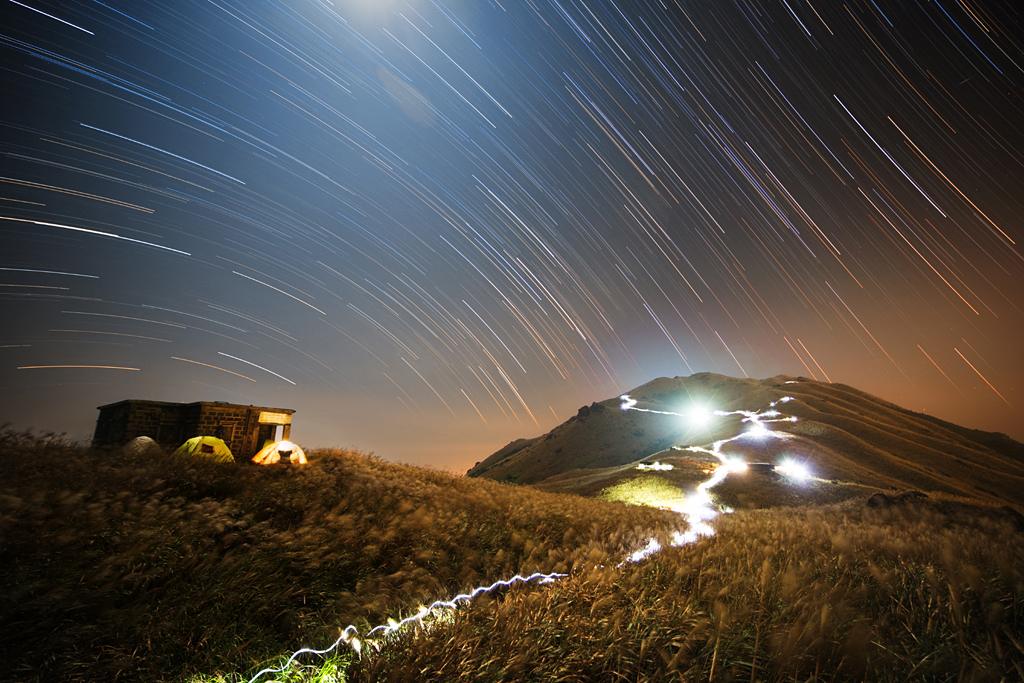
Sunset Peak Star Trail - Lantau Island, Hong Kong - by Chap Him Wong (People and Space, Winner)
The winner of the Young Astronomy section was taken by a 15-year-old boy, and features Comet Lovejoy.
Both judges describe it as technically very competent.
"Comet Lovejoy is still and vivid," says Culshaw, "in contrast with the dotty morse code star trails around it".
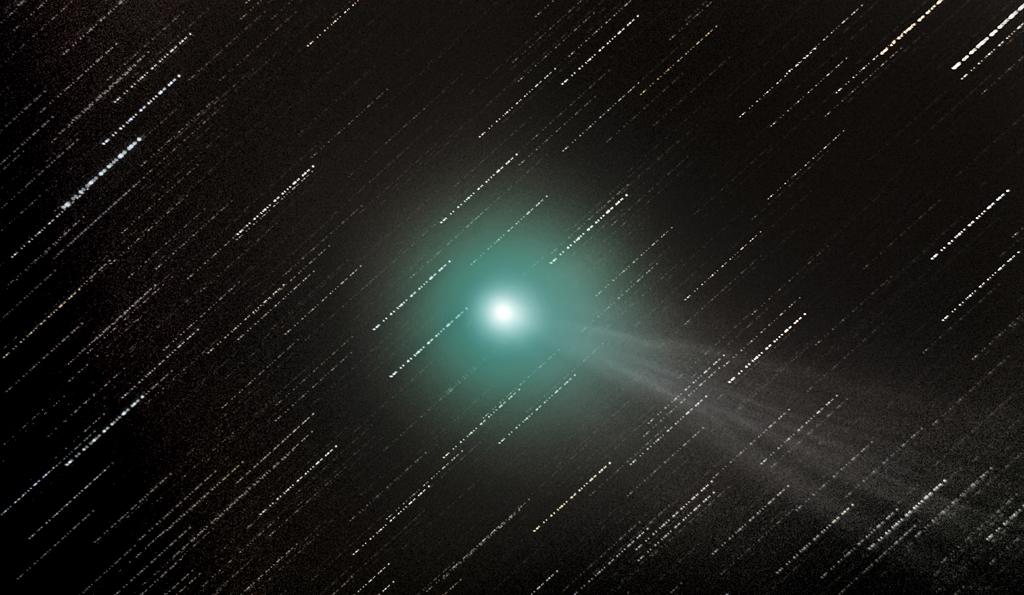
A Celestial Visitor - by George Martin (aged 15) (Young Astronomy Photographer of the Year, Winner)
From the same category, this image of the total solar eclipse of 20 March 2015 was taken by a 7-year-old boy on a tablet computer, as he was on a flight over the North Atlantic.
"We were blown away by this," says Kukula. "He spotted an amazing sight and opportunity - and just clicked."

Total Solar Eclipse over North Atlantic Ocean - by Philippe Rowland (aged 7) (Young Astronomy Photographer of the Year, Highly Commended)
The next image took the special prize for robotic scope images. It shows an relatively close encounter between Comet Siding Spring and Mars.
Robotic scopes are sophisticated pieces of equipment - often powerful telescopes at dark-sky remote-site observatories. They are accessed by members of the public over the internet.
"It put me in mind of a 1970s science fiction special effect," says Culshaw. "I am glad there was no impact."
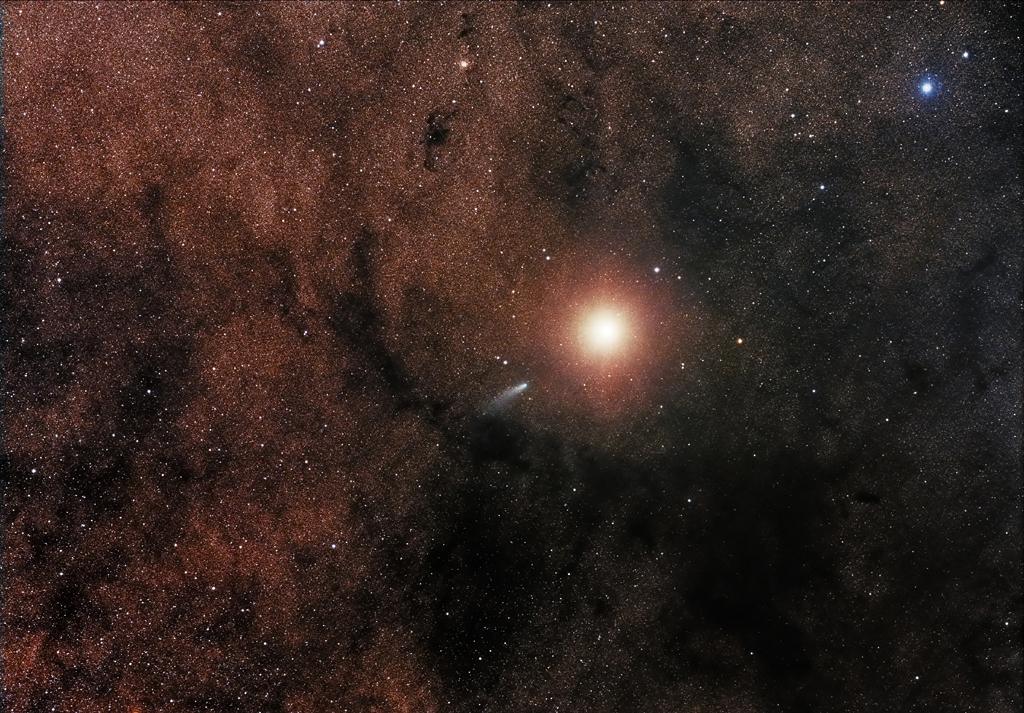
Comet C/2013 A1 alongside Mars - by Sebastian Voltmer (Robotic scope)
The Sir Patrick Moore Prize for Best Newcomer is for photographers who have only been taking images of the cosmos for up to a year.
It shows the Orion nebula - "a wonderful picture," says Culshaw.
"Like cigarette smoke in a club. Grey, blue and raspberry - contrasting shades beautifully captured."
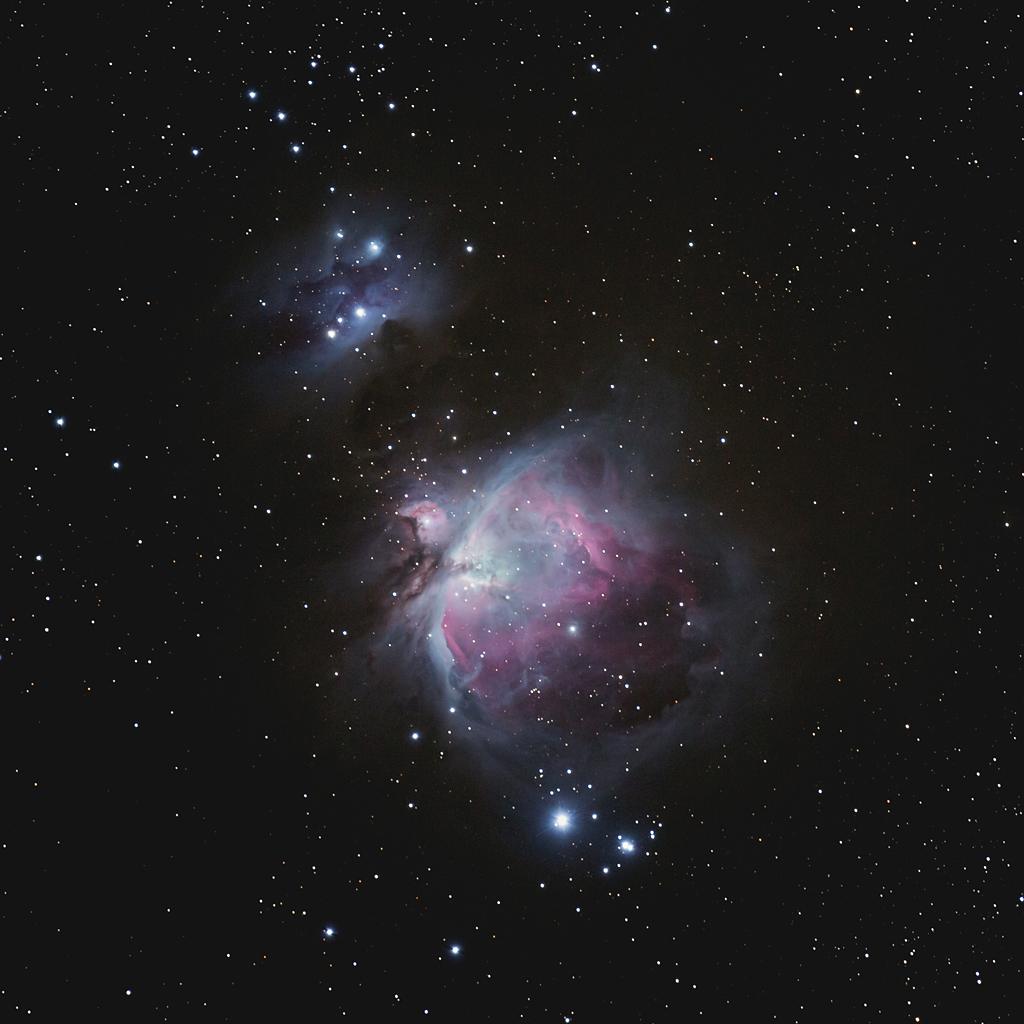
Orion DT - by David Tolliday (Sir Patrick Moore Prize for Best Newcomer)
This final image is the overall winner.
It is from the Skyscapes category and again it features the solar eclipse of 20 March 2015 - as seen from Svalbard, Norway.
Marek Kukula says it was a unanimous choice of the judges.
"It captures the moment of totality. The Moon blocking the Sun. The lighting effects in the sky reflecting in the snow. It feels like you are there."
Jon Culshaw says the image's beauty and power is in its simplicity - and it captures the feeling you get when you see an eclipse.
"A ball of rock the size of Australia blocking out the light of the Sun - but also the heat. There are huge laws of physics and the clockwork of the solar system being witnessed. I saw this and couldn't stop looking at it. It's almost other worldly."
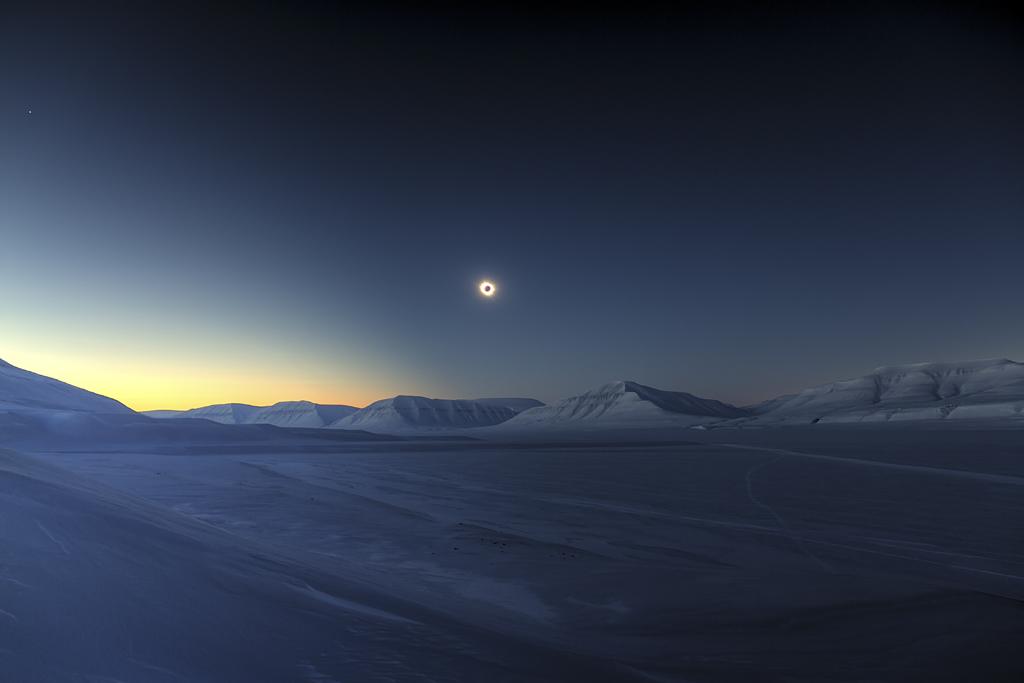
Eclipse Totality over Sassendalen - by Luc Jamet (Skyscapes, Winner and Overall Winner)
Images from the Insight Astronomy Photographer of the Year 2015, external competition can be seen at the Royal Observatory Greenwich in London until 26 June 2016.
All images subject to photographer copyright and provided courtesy Astronomy Photographer of the Year/National Maritime Museum.